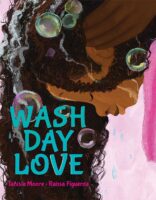BreAnn Fennell, a third grade teacher and a member of the 2023 Scholastic Teacher Fellows Cohort, a group working together to solve some of the most pressing teacher challenges, knows how to get kids to build better reading habits and learn to love the written word.
“Encouraging a love of reading for me is being able to turn books into experiences,” says Fennell. “Students remember when they can be involved, have choices, and be immersed in the literature.”
But you don’t have to wait for the ideal classroom experience to support a reader’s comprehension at home. With Scholastic’s free book report printable and the following teacher tips, you can help your young readers build habits that will last a lifetime.
Scholastic: How can you encourage kids to develop a love of reading?
BreAnn Fennell: We encourage kids to read by finding out what they love in life. I have a large classroom library but I am also adding to it with student input. Some students want to find themselves in a book, while others want to get transported to a different land with mystical creatures.
Tip from Scholastic Parents Staff: Parents can help kids find new favorites by encouraging them to follow their interests and recommending other titles that fit.

























